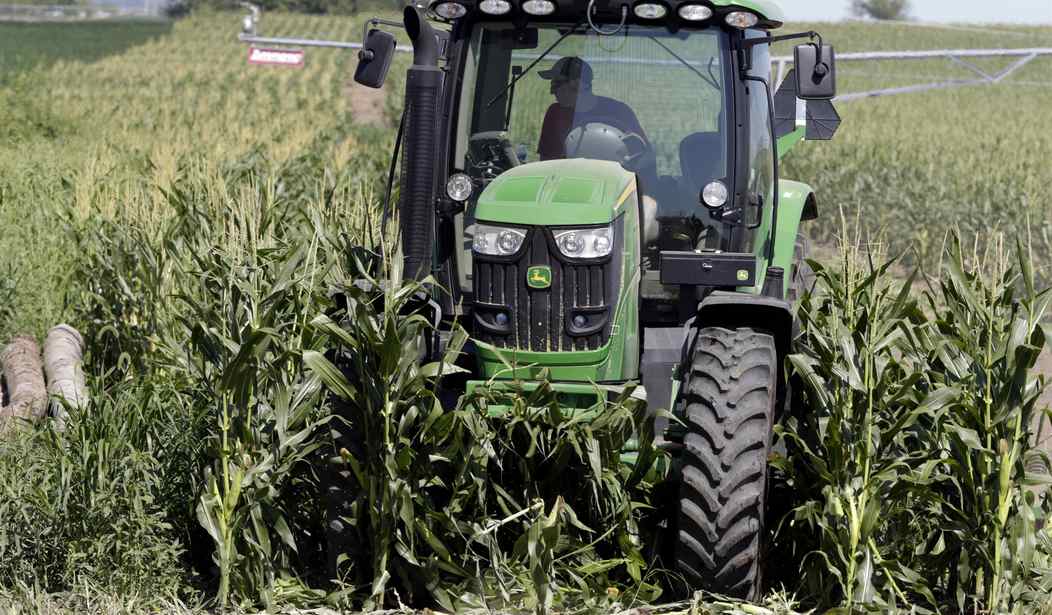The Agricultural Revolution was the first great revolution in human lifestyles. Thanks to plant and animal agriculture, people went from hunting and gathering to farming. This made possible the explosion in the division of labor, the first writing, the first mathematics, the first organized governments, the first towns and cities. Everything we have today, every aspect of our modern world, derives from this.
Since then, we went through the Industrial Revolution, and are now in the third great revolution, the Information Revolution. And that revolution, like every one before it, has had its ups and downs; some of the downs include things like the climate scolds, spreading corral litter across the internet. Case in point: An AP report recently bemoaned how agricultural operations require propping up by the government to adapt to climate change. There's just one problem.
A recent Associated Press (AP) article, titled “Scientists shielding farming from climate change need more public funding, but they’re getting less, has been published by numerous media outlets in the past few days. The AP’s claim is false, being flatly contradicted by actual agricultural performance data. Evidence clearly shows farmers aren’t being overwhelmed by climate change, rather, the vast majority of crops are benefitting from longer growing seasons, higher CO₂ levels, inducing record-setting crop yields.
The AP’s article suggests that climate change is outpacing farmers’ ability to adapt, and that the only solution is more federal funding for speculative research. That assumption is refuted by real world data. As outlined by Climate At A Glance and supported by USDA data, U.S. farmers have repeatedly broken production records in recent years. Corn, soybean, and wheat yields have all shown long-term upward trends—despite the supposed ravages of climate disruption. This isn’t a matter of opinion; it’s directly measurable, as seen in the figure below.
Here's the figure:
— Ward Clark (@TheGreatLander) April 2, 2025
Take a good look at that chart; its history starts in 1961, making that dataset as old as me, and I'm no spring chicken. Starting with that 1961 data point, cereal grain yields are up around 225 percent, with cereal production up almost 200 percent - while the population has only increased by roughly 100 percent, and the land used for cereal crops has declined.
How, one might ask, has this happened? Technology, in large part, technology that combines the Agricultural Revolution and the Information Revolution, and instead of coming from the government, it comes from the private sector.
The idea that agriculture is a helpless victim waiting to be rescued by government grants is out of step with the realities of modern farming. American farmers are using precision planting, advanced weather modeling, drought-tolerant seed hybrids, GPS-guided equipment, and AI-based pest management—almost all of it developed or commercialized by the private sector. While the AP article bemoans a drop in federal funding, it completely ignores the vast gains in agricultural productivity made through private innovation and market-driven adaptation.
Even the supposed threats to agriculture from climate change, like drought or extreme weather aren’t borne out in the data and certainly aren’t translating into declining output.
Ah, there's that pesky data again. The climate scolds, as we've seen time and again, rely on bad data and bad analysis to make bad predictions.
See Also: More Climate Falsehoods From the British Met Office
Climate Scolds Hardest Hit: CA Snowpack at Records Not Seen in Decades
As I've pointed out many, many times, the global climate is a system, or rather a lot of interacting systems, that is so vast, so chaotic, so impossibly complex that it's difficult for us to understand - much less predict. And there's the rub; the climate, yes, changes, and the climate, yes, has been warming in recent millennia, despite short-term ups and downs; 30,000 years ago, much of Canada and the northern United States were covered with mile-thick sheets of ice, and we are still in a glacial cycle in which mile-thick ice sheets are, on the geological time scale, going up and down like window blinds. Right now, we're in an interglacial spell - a warm spell. Humans, yes, have some impact, as does everything, but not enough impact to justify surrendering any or all of our modern, technological lifestyle - or seeing our governments go further into debt funding "green" boondoggles. The planet will, by and large, grow a little warmer over the next few thousand years, and that's good for agriculture too:
More than 200 Climate Realism posts demonstrate that crop yields and production have increased considerably during the period of, and partly due to, the recent slight warming. This is true across continents and countries and for almost every crop one examines. One Climate Realism post, for example, presents data demonstrating that farmland is becoming more productive, not less. In fact, mild warming and increased atmospheric CO₂ are improving crop resilience and accelerating growth—a phenomenon well understood in agronomy, if conveniently ignored in climate alarmist circles. CO₂ is not some evil pollutant to plants; it’s literally what they breathe.
The Earth has, through the vast majority of its history, been warmer than it is now. Sometimes a lot warmer. These are facts. Facts are amazing things. And the fact is that people in the developed world have easy access to a vastly greater variety of foods, easily obtainable, easily affordable by historic standards, and higher-quality foods than ever in human history. Technology, not government, is responsible for that.
So, relax. Enjoy your dinner - now with less climate scolding!














